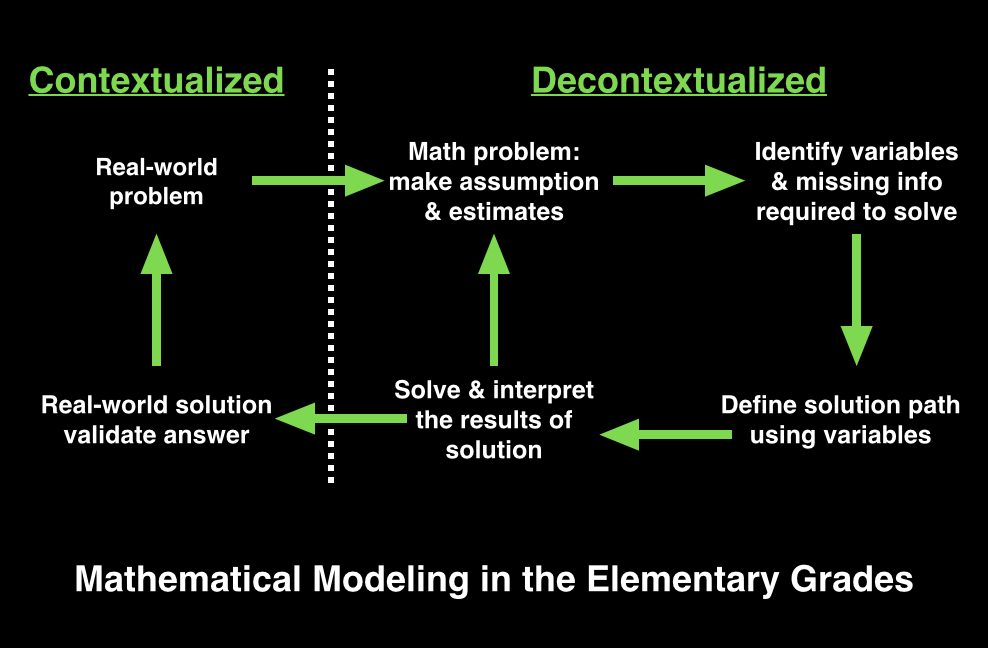Before reading on, you should start here: Dan Meyer’s summative post on mathematical modeling.
What CCSS says about Standard of Mathematical Practice 4 in the elementary grades:
Mathematically proficient students can apply the mathematics they know to solve problems arising in everyday life, society, and the workplace. In early grades, this might be as simple as writing an addition equation to describe a situation.
Mathematically proficient students who can apply what they know are comfortable making assumptions and approximations to simplify a complicated situation, realizing that these may need revision later. They are able to identify important quantities in a practical situation and map their relationships using such tools as diagrams, two-way tables, graphs, flowcharts and formulas. They can analyze those relationships mathematically to draw conclusions. They routinely interpret their mathematical results in the context of the situation and reflect on whether the results make sense, possibly improving the model if it has not served its purpose.
What modeling can look like in a flow chart:
Elementary 3-Act Resources:
- Graham Fletcher (K-8)
- Robert Kaplinsky (3-12)
- Dane Ehlert’s (3-12)
- Dan Meyer (3-12)
- Kyle Pearce (3-12)
- Mike Wiernicki (3-9)
- 101 Questions (hosted by Dan Meyer)
Student Recording Sheets
- 3-Act Recording Sheet (1st-5th grade)
- 3-Act Recording Sheet (Kindergarten)
Modeling posts worth reading:
What would happen if we took the problem apart and put it back together again? -Joe Schwartz
I hope this section will continue to grow. Please drop me a line and let me know of a modeling post that needs to be added here. All of us are smarter than one of us.
Questions
Q: I have an idea for a 3-Act but don’t have a blog?
A: Don’t need one. 101questions is an excellent website for you to begin experimenting and sharing your ideas with others trying to get their model on.

